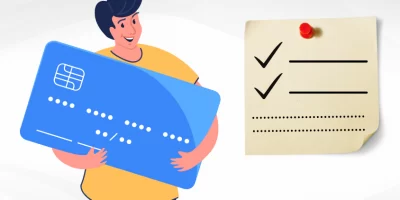In the ever-evolving landscape of the internet, we are witnessing the dawn of a new era with the advent of Web3. At the heart of this transformative technology are Web3 tokens, playing a crucial role in reshaping the digital landscape.
As a leading technology company, Elevate Protocol is revolutionizing the way assets are managed on the blockchain.
For those new to the concept, this beginner’s guide will unravel the mysteries surrounding Web3 tokens, providing a comprehensive understanding of their significance and functionality.
Web3
Before delving into Web3 tokens, let’s first grasp the essence of Web3 itself. Web3 represents the third era of the internet, aiming to create a more decentralized, user-centric, and secure online environment.
Unlike its predecessors, Web3 envisions a world where users have greater control over their data, privacy, and digital identity.
Web3 Tokens
In the realm of Web3, tokens act as the building blocks of decentralized applications (DApps) and smart contracts. These digital assets, recorded on a blockchain, embody value and serve various purposes within the Web3 ecosystem.
Web3 tokens leverage blockchain technology to ensure transparency, security, and immutability.
The Role of Blockchain in Web3 Tokens
Blockchain, a distributed ledger technology, is at the core of Web3 tokens. It provides the infrastructure for secure and transparent transactions without the need for intermediaries.
Each transaction is recorded in a block, and once added to the chain, it becomes virtually tamper-proof. This decentralized and transparent nature of blockchain technology is fundamental to the functioning of Web3 tokens.
Key Features of Web3 Tokens
Interoperability
Web3 tokens are designed to be interoperable across different platforms and blockchains. This means that a token created on one blockchain can be seamlessly used on another, fostering a more connected and collaborative digital ecosystem.
Programmability
Smart contracts, self-executing contracts with the terms of the agreement directly written into code, are a vital aspect of Web3 tokens. This programmability allows for the automation of various processes, ensuring trustless and efficient transactions.
Decentralization
Unlike traditional centralized systems, Web3 tokens operate in a decentralized fashion. This decentralization eliminates the need for a central authority, distributing control and decision-making among participants in the network.
Tokenization of Assets
Web3 tokens can represent real-world assets such as real estate, art, or even shares in a company. This process, known as tokenization, facilitates the fractional ownership of assets, making them more accessible and tradable.
Types of Web3 Tokens
Utility Tokens
Utility tokens are the most common type of Web3 tokens. They provide access to a particular service or platform, essentially representing a form of digital currency within that ecosystem. Examples include Binance Coin (BNB) and Ethereum’s Gas.
Security Tokens
Security tokens represent ownership in an underlying asset, often analogous to traditional securities like stocks and bonds.
These tokens are subject to regulatory compliance and are designed to provide investors with a stake in the success of a project.
Governance Tokens
Governance tokens empower holders with decision-making abilities within a decentralized autonomous organization (DAO) or a blockchain network. Participants can use these tokens to vote on proposed changes or updates to the protocol.
Non-Fungible Tokens (NFTs)
NFTs are unique tokens that represent ownership of a specific digital or physical asset. These tokens have gained immense popularity in the art and gaming industries, enabling the ownership and trade of unique digital assets.
The Importance of Web3 Tokens
Empowering Users
Web3 tokens empower users by giving them control over their digital assets and identities. Users can transact with confidence, knowing that the decentralized nature of Web3 tokens provides enhanced security and privacy.
Incentivizing Participation
Many Web3 platforms leverage tokens to incentivize user participation. Users are rewarded with tokens for contributing to the network, whether through providing computing power, validating transactions, or participating in governance.
Fostering Innovation
The programmable nature of Web3 tokens allows for the creation of novel and innovative applications. Developers can build decentralized applications that leverage the unique features of Web3 tokens to create new and improved digital experiences.
Challenges and Considerations
While Web3 tokens offer a promising future for a more decentralized and user-centric internet, there are challenges and considerations to be mindful of:
Regulatory Uncertainty
The regulatory landscape surrounding Web3 tokens is still evolving. Governments and regulatory bodies are working to establish frameworks. This uncertainty can impact the adoption and development of Web3 projects.
Scalability
Scalability remains a significant challenge for many blockchain networks. As the popularity of Web3 tokens grows.
Ensuring that blockchain networks can handle increased transaction volumes without sacrificing speed and efficiency becomes crucial.
User Education
The concepts of blockchain, Web3, and tokens can be complex for beginners. Education and user-friendly interfaces are essential to ensure widespread adoption and understanding of the technology.
Conclusion
Web3 tokens represent a fundamental building block of the decentralized future envisioned by the Web3 movement.
These tokens, powered by blockchain technology, offer a new paradigm for the internet – one that is more transparent, secure, and user-centric.
As the Web3 ecosystem continues to evolve, understanding the role and functionality of Web3 tokens becomes increasingly important for both users and developers.
Read More: What is Web3 Technology and Its Basics














Comments